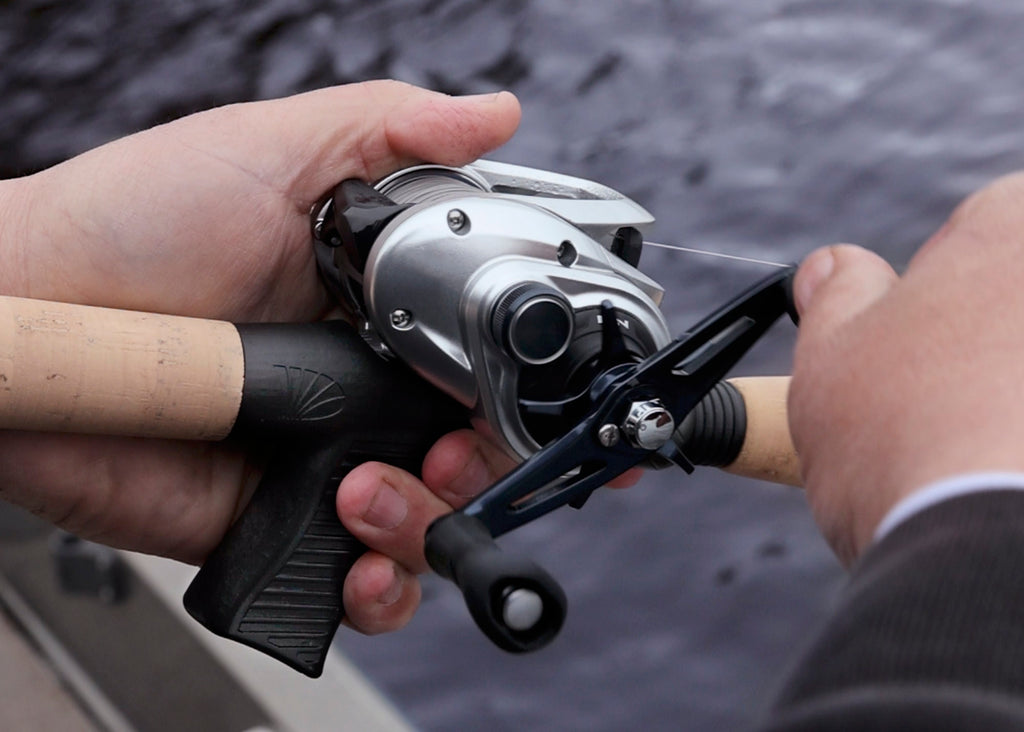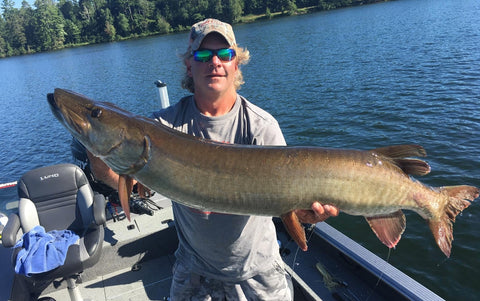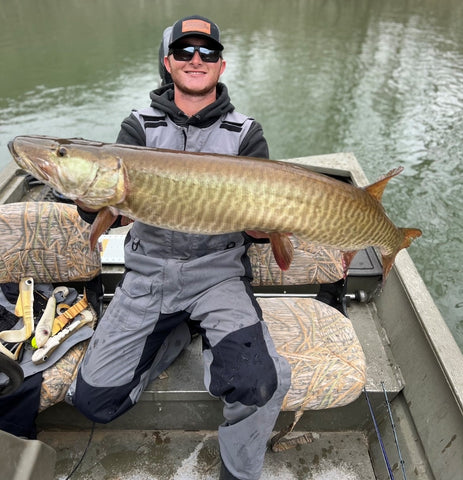November Bass at Lay Lake
with Josh Herren
Bass fishermen often think of November as a time to start hunting bass deep with jigging spoons. That is fun, but catching shallow bass is usually preferred. Fortunately, Lay Lake offers the chance to catch bass on a couple of shallow patterns this month so it is a great choice for a fishing trip.
Lay Lake is on the Coosa River about 35 miles south of Birmingham. It covers 12,000 acres of river and creek ledges, shallow flats and backouts full of grass. It is an old lake, dammed in 1914, and the shallows are getting silted in.
For many years Lay has been a quality bass fishery for both largemouth and spotted bass. In the Bass Angler Information Trail statistics for 2008 about half the bass weighed in during tournaments were each species.
The average size of bass has been good, with tournament bass averaging 1.81 pounds in 2008 and average big fish in a tournament weighing 3.95 pounds. But in early fall tournaments average size has been down and winning weights have been lower than in the past. There are lots of smaller bass so the next few years looks good. And cooler water this month will make bigger bass hit better.
Josh Herren grew up near Lay Lake and says he has been fishing it since he could walk. His father Matt, who fishes the Elite Series on the BASS Trail, got Josh started tournament fishing when he was about seven years old and he started tournament fishing on his own as soon as he got a drivers license.
In college Josh wanted to fish with the University of Alabama bass team but could not since he had won money in tournaments. That rule has changed now, but it kept him from fishing with the team then. He says he will follow in his father’s footsteps and be a full time professional bass fisherman.
Josh now works for Reaction Innovations and helps sell their lures nation wide. He fishes as many tournaments as he can, including the BFL Bama Division. Although he missed the first BFL this year due to them changing it because of bad weather, he still finished 30th overall and qualified for the Regional.
Josh is on the Legend Boat and Mercury Marine Pro staff working through Grammer Marine, where he is on their pro staff, too. He is also sponsored by Transducer Saver and Reaction Innovations Lures.
“Bass are predictable on Lay Lake in late October and during the month of November,” Josh told me. They follow the baitfish into the creeks and coves as the water cools, but will surprise you and move very shallow very fast. They may move from the mouths of the coves to the very back overnight, not in stages as on some lakes.
As the water cools in late November the bass will move back out, more slowly this time, and can be caught in the first couple of hundred yards of the cove or creek. All during the month they will relate to grass cover.
The lower lake is the best area for finding bass moving like this since it is more “lake like” rather than river fishing. And the lower lake offers a second good pattern, bass feeding on rocky points early in the morning. That pattern is a good way to hook one of the huge Coosa spots in the lake.
For fishing the grass in the pockets Josh ties on a Swamp Donkey Frog, four and a half inch Skinny Dipper swim bait, and a Sweet Beaver. All work well around the grass and he fished them on 65 pound Power Pro Braid to get a better hook set and get big fish out of the grass.
For fishing on points Josh has a Santone Get 5 white spinnerbait with silver willowleaf blades and a Vixen topwater plug. These baits are fished around the mouths of pockets where rocks give bass cover to attack shad moving into and out of the coves. This fishing is best before the sun gets on the water.
Josh makes his own rods and plans on starting a custom rod business. He teams his rods with a Shimano reel and uses long, heavy rods for fishing the grass and slightly lighter rods for spinnerbaits and topwater.
A couple of weeks ago Josh showed me the following spots. Some small bass were back in the pockets but bigger bass should be in them now. Check them out to see the kinds of places Josh fishes right now.
1. N 33 05.612 – W 86 31.773 – Go back in Spring Creek to the right and you will see an island sitting in to your left. It is the end of a point and grass is all around it, and the contour lines wrap around it, giving bass a path to follow on both sides.
This is a good example of the kind of place bass will move to first when they move in. It is well back in the creek and there will be lots of baitfish moving around the grass beds here as soon as the water hits about 67 degrees. At that point bass will move into the big feeder creeks on the lower lake, and will often move far back in them all at once.
Fish a Skinny Dipper swimbait in the grass and along the outside edges. Josh likes shad colors like bad shad green, pearl blue shad and white trash. He rigs them on a screwed up bullet, a weightless nose cone to make it come through the grass better, and a 6/0 wide gap Owner hook.
This is a good bait to throw on bluebird days when you want a subtle presentation. There will be cuts and lanes in the grass to swim the Skinny Dipper through, and running it along the outside edge of grass mats works well, too.
2. N 33 03.656 – W 86 31.544 – Across Spring Creek a huge grassy area starts on the right side going in and covers the whole back of the creek. Since it has a channel running into it this is another good place to find bass moving all the way back in late October and early November.
There are big clumps of grass in here and any of them can hold bass. Fish all of them before you leave. Start on the right across from the island in hole #1 and work the whole back of the creek. Fish around the island back there, cover as much of the grass beds as you can. You will often hit several good fish close together but fish won’t be everywhere in the grass.
Look for a pattern. If they are on points where the grass comes out a little and are almost all the way back in a creek or cove, concentrate on places like that. Look for similar places in the creek you are in and the same kinds of places in other creeks.
3. N 33 04.956 – W 86 31.024 – As you come out of Spring Creek and head downstream there is a big island sitting in the mouth of it off the downstream point. Behind this island is a secondary point on your left going into the pocket behind the island. There is a big grass mat all around this point that holds bass, especially later in the month as they move back out.
Fish all around the point, working the grass with all your baits. Look for transitions in the bass that hold fish. A point sticking out further than the grass mat indicates slightly more shallow water and will attract bass. A dip indicates deeper water and will also attract bass. Changes from one kind of grass to anther indicated a change in bottom composition and is an attractor. A hole or cut in the grass does the same thing.
Fish these transitions with your best casts. Work them carefully, running all your baits over and by them from different angles. Watch for patterns in the transitions to use in other spots, too.
4. N 33 04.451 – W 86 30.775 – The big pocket just upstream of Bozo’s Marina on the same side of the lake is one of Josh’s favorite tournament holes. He says he has won a lot of tournaments here and bass will be in it somewhere. Fish all the way around the pocket, hitting all the grass with all your baits.
As the water cools you will notice the grass starts to get a slime on top of it. This is the key to throw a Swamp Donkey frog. When the slime forms the bass will be under it and a frog is the best was to fish it.
Josh likes any black color frog to give a good silhouette against the sky if it is clear. He will throw a white frog on cloudy, overcast days. Work the frog fast across the surface of the slime covered grass and be ready for explosive strikes.
Bass will hit the frog even on bright, sunny days, but the best days are when it is messy, with rain and clouds. The kind of day you really don’t want to be on the water will often produce the best fishing in the grass.
5. N 33 03.980 – W 86 30.690 – Just downstream of Bozo’s Marina the river makes a turn to the right going downstream and the first cove on the right opens at a big grass flat. This flat is right on the river, not back in the cove. Bass will hold and feed in it every day.
Fish all of this grass. If the sun is bright a good choice is to flip a Sweet Beaver into the grass, dropping it through any small openings you can hit. Josh rigs his Beaver on a one ounce tungsten weight to punch through the mat and get under it.
Let your bait fall to the bottom, jig it once then move to the next place. You have to be ready to set the hook hard and horse the fish out of the grass fishing like this because you will be in some of the thickest grass. Use heavy rods and 65 pound Power Pro.
6. N 33 03.344 – W 86 31.294 – The next big open cove on your right going downsteam has an island in the middle of it. It is not far off the main river channel and bass will hold on it and feed. Fish the grass all around the island.
Look at your map or GPS and you can see how the island has a good contour line bending around it on both sides. This kind of structure makes a place much better, with deeper water near the grass beds in shallow water.
Look for this kind of depth change to find good spots to hit. Bass follow these contour lines as they move in and out of the feeding area, following the shad. Such changes mean a better place to fish.
7. N 33 02.636 – W 86 33.547 – Go into Reed Creek and you will see the mouth of a smaller feeder creek on your right on the outside bend of the creek channel. Fish all of it, working the grass from the mouth of it as far back as you can go.
These small feeder creeks often hold good numbers of bass and they may be all the way back in them. If you catch a bass on the first pass it is worth the time to work around it again since the bass is there for a reason, and others should be in the same area for the same reasons.
Always watch for baitfish. Seeing schools of shad mean you are in the right area. You will also often see bass busting the schools of shad showing you the area they are holding.
8. N 33 01.163 – W 86 30.853 – For a change of pace head down the river and watch for Camp Creek, a small creek on your left heading downstream. It is across from the mouth of Waxahatchee Creek. There are rocky points on both sides of the creek mouth and standing timber in the mouth of it.
Start before the sun comes up on these points for best results. Cast a spinnerbait or topwater bait right on the bank and work it out. Big Coosa Spots come in to feed on these points early in the morning and you can catch some good bass before the sun gets on the water.
Work around both points, keeping your boat out in 20 feet and casting right to the bank. Don’t go far back in the creek. Work the bank about 100 feet on both the inside and outside of the creek mouth. This creek has good points on both sides.
9. N 33 00.694 – W 86 31.042 – Go down the river past three small pocket to the next big one on your left. Both sides of this small creek are also rocky and there is timber in the mouth of it. Both things are needed for a creek mouth to be good, a rocky point and standing timber.
Work this one like the one above. Throw your spinnerbait right against the rocks. Bass will often be surprisingly shallow on these spots and seem to be looking toward the bank. They may ignore your bait if it hits even a foot from the edge of the water.
Josh likes two small willowleaf blades on his Get 5 spinnerbait and uses silver blades and white skirt. The small blades let him run the bait back to the boat fast. Fish these points quickly and cover as much water as you can before the sun hits them.
10. N 33 00.571 – W 86 31.049 – The next bigger creek, past two smaller coves just upstream of where the river makes a bend to the left, is also good. It has rocks and standing timber and also a good channel going into it, a key that makes the spots marked better than the smaller pockets between them.
A topwater bait will often get more hits than a spinnerbait so try both. Throw a stick bait like the Vixen right on the bank and walk it back to the boat. Fish it in a fast, steady motion, keeping it moving.
All these places will hold bass now through the end of November. Check them out, catch some bass and see the kinds of places Josh likes to fish. Then you can find other similar places to fish.













